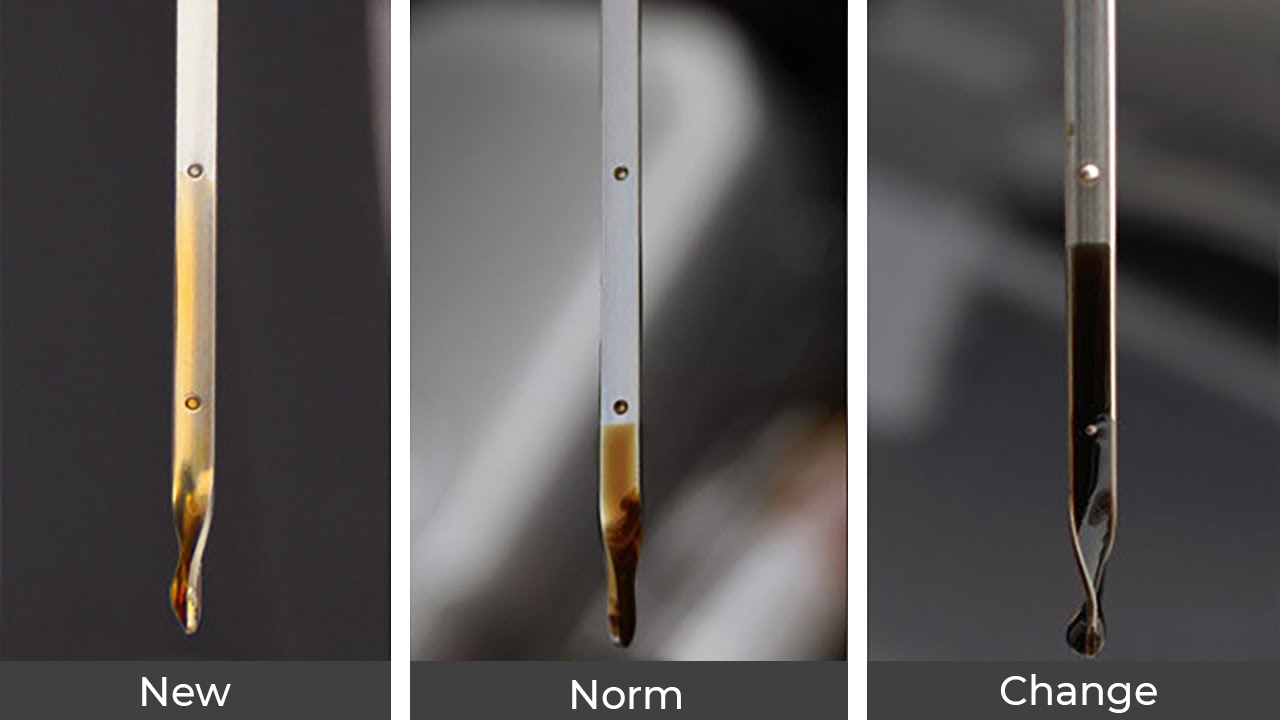Motorcycle Oil Change
When you ride your bike, the engine heats up. The oil gets hot and very thin, which makes it easier for contaminants to enter the system. After some time, that oil starts to get dirty. This dirt will mix with the new fresh oil that you add to your motorcycle’s engine. It is important to change this old dirty motorcycle oil. Once the engine oil is changed, new clean oil will flow through your engine which will keep it running smoothly and efficiently.
How Often Should you Change Motorcycle Oil?
Theoretically, it is important to check the factory recommendations, and that is what you need to stick to. But practically, things may be a little different, because the manufacturer’s recommendations are designed for certain average conditions of operation of the motorcycle. Sometimes it is worthwhile to proceed from objective factors.
Besides, the road infrastructure also has considerable value. Invaluable helpers in this delicate matter will be an oil dipstick and an inspection window in the crankcase of your motorcycle. Or a transparent tube, as is done on some models of KTM motorcycles.
The general average recommendations are that your bike probably needs an oil change every 3 months or 5,000 miles. However, if you are using synthetic oil in your bike, then the required motorcycle oil change interval between changes is extended to 6 months or 7,000 miles. Synthetic oils hold up better than regular types of engine oil and they require less maintenance than standard oils. They perform at a higher level under high heat and they are not as inclined to break down under the pressure.
If you are commuting to work every day on the motorcycle then it should be checked more often. For those of you who ride through extreme conditions or if you have many off-road riding experiences, your oil should be changed every 3 months or 5,000 miles.
Changes in the weather also play a factor in the frequency of changing your bike’s oil. If it is cold out then there will be more moisture in the air which can affect how regularly you need to change your engine’s lubricant. This is especially true for riders in colder climates. Riders who live in temperate zones shouldn’t have to change their oil as often.
So, it’s always best to check for yourself when you should change your motorcycle oil. Visually assessing the condition of the filled oil and the degree of its consumption is still the best and safest means of control. Sometimes the onboard computer optimistically informs you about the next change of oil only after 3100 miles of the run and you see the black substance on the mark “Min” of the oil dipstick.
If you are checking the color of the engine oil and it is dark, then you should probably get out the oil filter wrench because it’s time to change it.

Most motorcycle manufacturers recommend checking the oil level after every ride. Whenever you are checking the oil level on your bike, make sure to check the color of the oil too. New oil is transparent and brownish in color. The longer it has been running, the darker it will become. Checking the oil level on time will ensure that everything is in order and that there are no leaks. Changing the fresh oil will prevent corrosion and ensure that your oil is clean.
Why is it important to change motorcycle oil on time?
There are benefits to changing your motorcycle oil regularly even if you don’t ride often. Dirt builds up over time whether you use your bike or not. If you do nothing about this dirt, it can cause serious problems like corrosion, seizing up the engine, and can even lead to engine failure.
Most riders don’t realize how quickly dirt accumulates in the engine oil – it’s just a fact of life that engines get dirty. If you ride often or go on long rides, then it is especially important to change your motorcycle oil regularly. If you are ever in doubt as to how often you should change your motorcycle oil, ask your dealer.
There are four main aspects that the oil is responsible for.
- Lubrication of rubbing surfaces.
- Cooling of parts, since modern sports bike engines can easily rotate up to 16,000 rpm. In addition, the cooling systems of motorcycles (not only sportbikes) also often contain an oil radiator, through which the oil, being cooled, flows again to the parts experiencing friction loads.
- Protection of engine parts from corrosion, since regardless of whether the engine is running or not, moisture enters it from outside and as a result of fuel combustion.
- Cleaning the engine from wear products of rubbing parts and other solid particles, which get into the oil and are delivered to the oil filter for cleaning. And to be quite frank, the more often you can change the engine oil, the better it will affect its longevity.
The Importance of Oil Quality
Inadequate quality fuel creates soot on combustion, oil oxidation, and additives burnout occur gradually. All this leads to increased loads on the piston group, transmission units, and, consequently, to a reduction in the service life.
How to Change the Oil on a Motorcycle
Materials:
- Engine oil (the right viscosity)
- A catch pan or container
- An oil filter wrench or a strap wrench to remove the crankcase drain bolt
Step 1: Drain the old engine oil from the motorcycle. For this, you need to locate and open the crankcase drain bolt. Use this information for most models of the most popular motorcycles.
- Kawasaki KLR650: Drain plug is located on the engine case behind the front number plate.
- Yamaha WR250R/X: Drain bolt is located near the oil filter, it has a square-shaped head with 25mm edges.
- Honda XR650L: Underneath the fuel tank, the drain bolt is located on the right side. It has a 19mm head with a 6-point hexagon shape.
- Suzuki DR650SE: Drain plug is located underneath the bike near the oil filter, it has 6mm squared edges.
- Husqvarna TE449: Underneath the fuel tank, remove the rear brake pedal and its 10mm bolt. Unscrew hexagon-shaped drain bolt that is located near the oil filter.
Step 2: After draining the old oil, refill the engine with fresh oil. The amount of oil needed will be stated in your motorcycle owner’s manual, usually, it’s 3 liters or 3 quarts for most models. Some models require more oil, but as a rule of thumb, you should always use as much as the manual states.
Step 3: Unscrew the old oil filter from the engine and dispose of it correctly. Get a new one and screw it on tightly.
- Wrap your hand with a cloth before removing the filter because some filters can be difficult to grip.
- You can use a strap wrench or a filter wrench to remove the old filter.
- Make sure that the new oil filter is securely tightened in place.
Step 4: Open up the drain bolt and let all of the remaining engine oil drains from your motorcycle’s crankcase. Once it has stopped dripping, close up the drain bolt by tightening it.
Step 5: Start the engine and let it idle for a minute so that all of the old oil gets mixed with the new one.
Step 6: Remove the drain plug or cap from your motorcycle’s oil tank, take off the dipstick and wipe it clean before inserting it back in.
Step 7: Check the oil level by taking out the dipstick. If it needs more oil, add it slowly to avoid spills or overflows.
To prevent engine damage or oil leaks when changing the motorcycle’s oil, make sure you place a drop cloth underneath your bike to avoid getting any stains on your garage floor. Also, place the drain pan directly under your oil tank so that you don’t spill any of it. Use a funnel to avoid spills when adding new oil to the motorcycle’s oil tank.
Take steps to make changing the oil on a routine basis for your motorcycle as easy as possible by leaving the used oil at an auto store or other location where they will dispose of it for you.
So when does the oil in the motorcycle engine requires replacement?
Motorcycle engine oil change interval, as mentioned above, can vary greatly. If you have NOT sports equipment, subjected to overloading, where changing the oil after every race is commonplace, then the average service interval is better to keep around 3100-3800 miles.
The answer is that when you ride a motorcycle, a small number of combustion products pass by the rings – into the crankcase, introducing water in addition to pollutants. Harmful substances mix with the oil and spread throughout the engine through the oil pump, where they can begin to destroy small but expensive parts.
If your bike is only used for short rides and is rarely fully warmed up, that is, left at operating temperature for less than an hour, moisture will accumulate and dilute the oil, degrading its lubricating properties, cleaning, and cooling functions. If your bike is almost always used for short runs, and not always running fully warmed up for long periods, you should change the oil about three times a year. Ideally, you should warm the engine up to operating temperature and not shut it off for an hour at least 2 times a month.
We recommend changing the oil filter at every oil change. Contaminants and chips that are bad for the engine accumulate in the filter. Why? To be sure, you can cut open your old filter with a solvent cleaner, and see if there are any harmful elements (like metal shavings).
Final Words
It’s a fact of life that engines get dirty. If you ride often or go on long rides, then it is especially important to change your motorcycle oil regularly. Whether you’re racing or going for a leisurely drive in the country, if you neglect this basic maintenance task there could be serious consequences down the road. For example, dirt in engine oil can lead to corrosion and seizing up the engine – not what most riders want! To avoid these issues from happening when changing your motorcycle oil, keep an eye out for any leaks while filling with new motorbike oils, and remember to dispose of old used oils at an auto store nearby so they can properly recycle them. In addition, don’t forget about safety precautions like wearing gloves when removing filters or draining engine oil. If you follow these steps, you should have no problems when changing your motorcycle oil!

